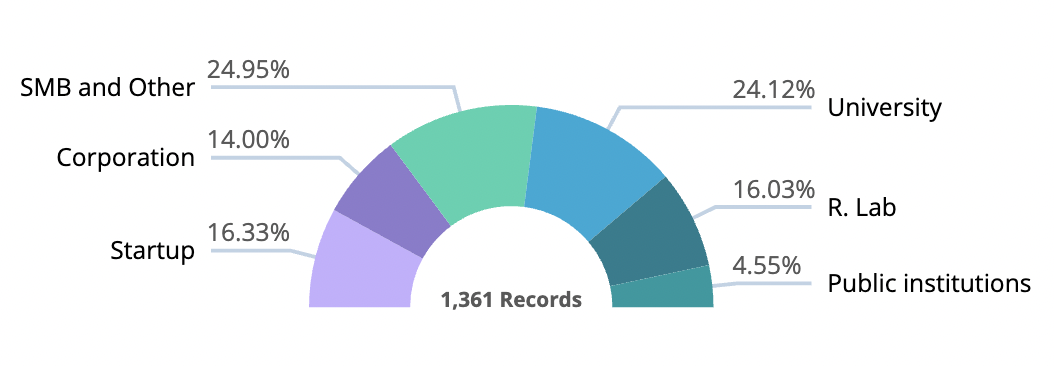A robot reproducing itself? Recent research by the University of Vermont, Tufts University, and the Wyss Institute for Biologically Inspired Engineering at Harvard University, shows the first living robot that can reproduce: Xenobots.
Xenobots robots are less than a millimeter wide and are formed from the stem cells of the African clawed frog. They are considered programmable organisms and there is no manipulation of genes involved: to make xenobots researchers scraped living stem cells from frog embryos and left them to incubate.
Scientists who created Xenobots say that these robots can reproduce in a different way than plants and animals. They are using their collective intelligence to find single cells, gather hundreds of them together, and assemble new Xenobots inside themselves.
“With the right design—they will spontaneously self-replicate,”
says Joshua Bongard, Ph.D. and robotics expert at the University of Vermont who co-led the new research.
This innovation has been growing in recent years, and can be still considered as a niche research topic. After launching a search for “Xenobot” or “Biobot” in Linknovate’s technology scouting platform, this showed over 1000 references have been published on the topic in the last decade, mainly linked to small companies and academic institutions.

Our AI technology generates this graphic by detecting the source of records, helping users detect the mature level of innovations and improve their innovation scouting searches. If you’re curious to find out more about InnoScout, book a demo here.
This disruptive innovation is quite recent and the topic is growing in activity since the first boost of investigations in the field in 2020. Results in Linknovate for “Xenobot” show this time line:

What can Xenobots do?
There are two Xenobots versions. A first full Xenobot was created in 2020, followed by a 2.0 version in 2021 that has the basic functionality of collaborative work and self-healing of the previous version but with faster and improved capaceties.
Xenobots change their movement from time to time, so they will move in a particular way, then they will change it and when they encounter other loose cells, they will herd them into little piles. And two xenobots might join together and scoot around as a couple.
Artificial intelligence to choose the more suitable shape
In order to find the more suitable shape to reproduce, scientists used a supercomputer from Vermont University with an artificial intelligence specialized in biological evolution.
With artificial intelligence help, researchers then tested billions of body shapes to make Xenobots more effective at this type of replication.
This computer and their artificial intelligence determined that the Pac-man shape was the best-fit design.

With this shape, it was able to find tiny stem cells in a petri dish, harvest thousands of individual cells, and put them together into its mouth. A few days later the bundle of cells became new xenobot babies. These babies will be able to do the same as their parents. They will self-reproduce in the same way.
Unlocking the mysteries of cellular communication
Xenobot’s eerily advanced behavior can help scientists unlock the mysteries of cellular communication. But, how do xenobot’s cells communicate? And how can we control it? This is the key question.
The author of the study, Josh Bongard said:
“Most of the people think of robots as made of metals and ceramics”
The typical robot is a collection of dumb parts that can walk and manipulate objects. But cells are communicating to make tissues, which collaborate to make organs, which make up the intelligent whole.
Studying these evolutionary techniques means the robots adapt to the environment like real living things but under human control.
Although most of the research is being done by United States, the University of Queensland, in Brisbane Australia, has also issued a couple of publications on the subject that you can access here.

The next application
Xenobots don’t have any practical application yet. But this combination of molecular biology and artificial intelligence could potentially be used in a host of tasks in the body.
According to the researchers, this discovery brings new hope to regenerative medicine, as a new tool for dealing with traumatic lesions, birth defects, aging, or even cancer.
Creating Xenobots from human stem cells opens the door to multiple difficult tasks. In fact, they could be specifically created from the stem cells of a patient. The immune system of the patient would not reject them because the cells are not foreign.
Therefore, xenobots could be injected into the bloodstream and could be programmed to travel to a certain area to deliver drugs, dismantle tumors, unclog arteries or even could be used in regenerative medicine to repair organs.
They could be useful for environmental matters such as collecting microplastics in the oceans, inspecting root systems, searching for radioactive contaminants or degrading harmful herbicides. Furthermore, Xenobots don’t impact the environment after finishing their 10 day lifespan because they are completely biodegradable.
People can consider Xenobots as a whole new life form and therefore they have an intrinsic moral status. The main question will actually be the ethical one.
We will see new developments in this field in the next years, these robots will have a great impact on the world of science and we must remain open-minded and critical of their applications.
“We are witnessing almost the birth of a new discipline of synthetic organism, I don’t know if that is robotics, zoology or something else.” Sail Hod Lipson
Insights gathered in our platform show the most relevant keywords that appear in the sources used. This table can provide ideas on what is most mentioned and what other applications are being considered.

Perhaps new companies will study this field and new uses will emerge in the future, the potential of this innovation is enormous. Stay tuned 😉





